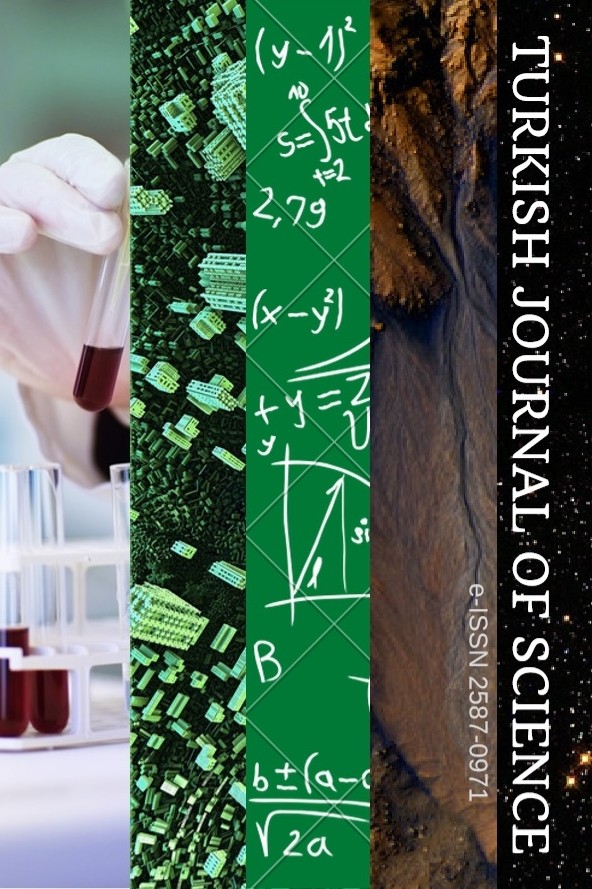Mathematical Modeling of the Effect of CO2 Laser Parameter on Shape and Geometry of Polymer Plate
Mathematical Modeling of the Effect of CO2 Laser Parameter on Shape and Geometry of Polymer Plate
Mathematical Modeling, Polymer, Fourier Method PMMA, Laser Ablation,
___
- Reference1 M. Barletta, V. Tagliaferri, F. Trovalusci, F. Veniali, A. Gisario, The mechanisms of material removal in the fluidized bed machining (FBM) of polyvinyl chloride (PVC) substrates, Journal of Manufacturing Science and Engineering, 2013, 135(1): 011003-1-14 DOI: 10.1115/1.4007956
- Reference2 C. Huang, X. Ma, M. Wang, Y. Sun, C. Zhang, H. Tong, Property of the PVC Dust Collecting Plate Used in Wet Membrane Electrostatic Precipitator, IEEE Transactions on Plasma Science, 2014, 42(11), 3520-3528
- Reference 3 V. Belaud, S. Valette, G. Stremsdoerfer, B. Beaugıraud, E. Audouard, And S. Benayoun, Femtosecond Laser Ablation of Polypropylene: A Statistical Approach of Morphological Data, Scanning 2014, Vol. 36, 209–217
- Reference4 S. Lazare, J. Lopez, F.Weisbuch, High-aspect-ratio microdrilling in olymericmaterials with intense KrF laser radiation, Appl. Phys. 1999, A 69 [Suppl.], S1–S6
- Reference5 S. Lazare And V. Tokarev, Recent Experimental and Theoretical Advances in Microdrilling of Polymers with Ultraviolet Laser Beams, Fifth International Symposium on Laser Precision Microfabrication, Proceedings of SPIE 2004, Vol. 5662, 221-231.
- Reference6 T. Canel, A.U. Kaya, B. Celik, Parameter optimization of nanosecond laser for microdrilling on PVC by Taguchi method, Optics Laser Technology, 2012, 44; 2347-2353
- Reference7 T. Canel, E. Kayahan, L. Candan, S. Fidan, T. Sınmazc¸elik, Influence of laser parameters in surface texturing of polyphenylene sulfide composites, J. Appl. Polym. Scı. 2019, Doi: 10.1002/App.47976
- Reference8 T. Canel, M. Zeren, T. Sınmazcelik, Laser parameters optimization of surface treating of Al 6082-T6 with Taguchi method, Optics Laser Technology, 2019, 120; 105714
- Reference9 T. Canel, I. Baglan, T. Sinmazcelik, Mathematical modelling of laser ablation of random oriented short glass fiber reinforced Polyphenylene sulphide (PPS) polymer composite. Optics Laser Technology, 2019, 115; 481-486
- Reference10 T. Canel, I. Baglan, T. Sınmazc¸elik, Mathematical modeling of heat distribution on carbon fiber Poly(etherether-ketone) (PEEK) composite during laser ablation, Optics Laser Technology, 2020, 127; 106190
- Reference11 T. Canel, I. Baglan, Mathematical Modelling of One Dimensional Temperature Distribution As A Function Of Laser Intensity On Carbon Fıber Reinforced Poly(Ether-Ether-Ketone)-(Peek) Composite, TWMS J. App. and Eng. Math. 2020, V.10, N.3, pp. 769-777
- ISSN: 2587-0971
- Başlangıç: 2016
- Yayıncı: Ahmet Ocak AKDEMİR
Integral Inequalities for Different Kinds of Convexity via Classical Inequalities
Alper EKİNCİ, Ahmet Ocak AKDEMİR, Muhamet Emin ÖZDEMİR
The Padovan- Padovan p-Sequences in Groups
Mathematical Modeling of the Effect of CO2 Laser Parameter on Shape and Geometry of Polymer Plate
The Pell-Fibonacci Sequence Modulo m
The Signatures and Boundary Components of the Groups $\hat{\Gamma}_{0,n}(N)$
Erdal ÜNLÜYOL, Aziz BÜYÜKKARAGÖZ
On Pythagorean Fuzzy Soft Boundary
A new study on focal surface of a given surface
A Note on Hopf Bifurcation and Steady State Analysis for a Predator-Prey Model
Half inverse problems for the impulsive singular diffusion operator
